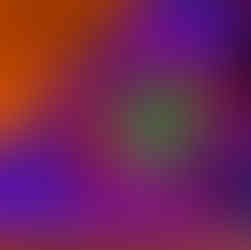The first few work options were trial, and as a result, not all were successful.
So, for example, a small work (23.5H – 20L – 12W) was planned as an exit of the form and colour out of the sculpture borders. As a result, the colour united the theme, but it seems to me that the shape of the blue colour is so fragmented that the piece does not look complete.
Or another work, a twisted, elegant shape is invisible in the finished form. It seems to me because the emphasis shifted from the form to the sculpture itself. If the size of the final pice would be bigger, and the "hole" smaller, it would look better. Also, a simple form is not suitable for such a presentation. There is a trace of the form. We do not know its material, the colours it is just emptiness, hole.
Experimenting with colour looks exciting, but the shape is often overloaded. Ultraviolet paint is very bright and intense it is difficult to combine it with other colours.
Therefore, the best combination of white and one colour. This creates an interesting combination between the physical colour of classical sculpture and the hyper colour of digital reality.

In drawing and sketching, everything is completely different.
If we perceive the colourful layers as a three-dimensional space, it turns out that the colour can unite, but the structure of the previous layers comes through, and we can see it.

And then I remembered Greenberg "For flatness alone was unique and exclusive to pictorial art." (Greenberg, Modernist Painting 1961). Only flatness distinguishes sculpture from painting. It turns out that the boundaries begin and end in the same way as the flat surface begins. Then what about sculptures where the plane is clearly visible, even two flat sides, and at the same time, it is a sculpture? Hang it on the wall? But we know that there is a downside.



























































Comments